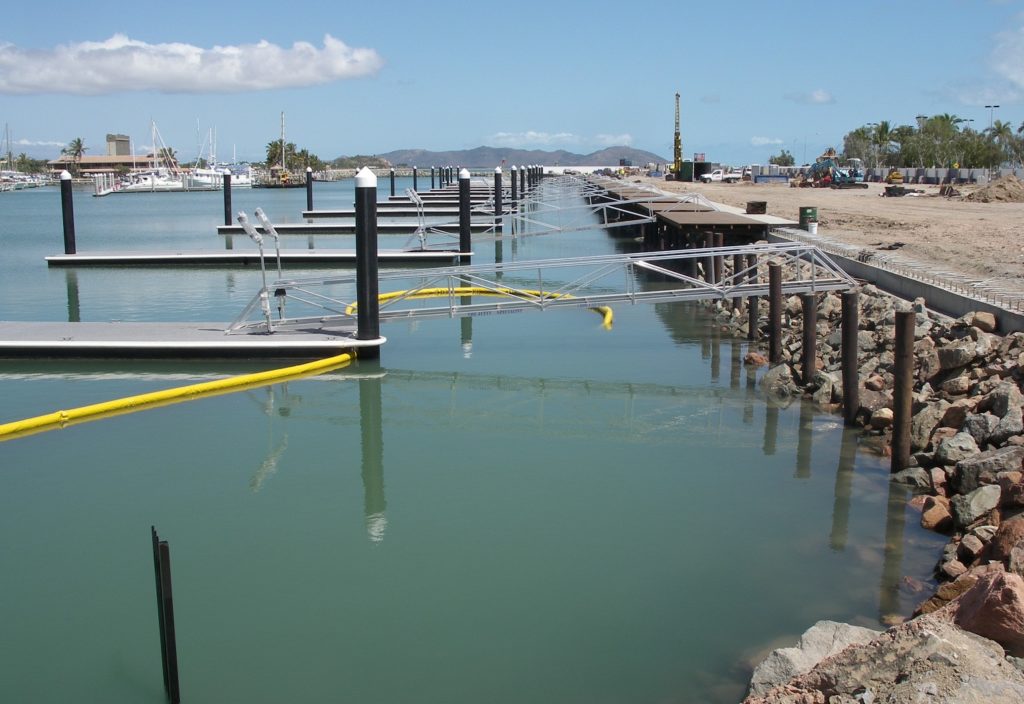For more than 100 years hot dip galvanizing has been used to extend the life and durability of concrete structures like the Sydney Opera House, Australia’s Parliament House and the New NY Bridge in the United States. However, its effectiveness has been left to educated guesswork, mainly from analysis of existing structures around the world and applying the results elsewhere.
Now, thanks to a new predictive deterministic model developed by the Galvanizers Association of Australia and Vinsi Partners, engineers and designers can factor in the time it takes for corrosion to start in carbon steel and galvanized steel reinforcement in concrete.
The Galvanizers Association of Australia is the industry association for all galvanizing companies in Australia. It provides free technical publications and practical assistance on design, application, process, bolting, welding and painting of galvanized steel.
Corrosion: a costly concrete killer
Corrosion impacts steel and other metals used in concrete, particularly near environments with higher chloride levels. The corrosion is expansive, and leads to tensile stresses or cracking, significantly weakening its structural integrity. The cost to fix or address corrosion in concrete structures in Australia is estimated to be around $6.4 billion each year.
When tackling corrosion and incorporating durability into concrete structures, the usual options are to use stainless steel, increase the concrete cover or use galvanized reinforced concrete. The first two options can be costly, and considerations also need to be made about the overall long term environmental impact. While the addition of zinc through the galvanizing process may appear to have a higher environmental impact upfront, over the longer term, it becomes minimal when compared with an option like increasing concrete cover.
Galvanized reinforcing is a cost-effective way to eliminate the effects of carbonation and significantly offset the start of corrosion caused by chloride attack. This kind of corrosion is more prevalent near marine or coastal environments, or when using materials including marine sands, other contaminated aggregates, or saltwater or brackish water when mixing or curing.
The New NY Bridge is one of the largest design-build projects in the United States. It replaces the Tappan Zee Bridge which was retired after 62 years of service. Due to the New NY Bridge’s extensive use of hot-dip galvanized steel to counter the effects of chlorine-based corrosion, it comes with an assured 100-year design life for the structure.
To know is better than to think
“Until now, it’s just been theory. Our model reliably gives engineers and designers the ability to make educated estimates of design life, durability and corrosive influences for concrete structures that use galvanized reinforced steel,” said David Harrison, Market and Specifications Engineer, Galvanizers Association of Australia.
“Our model estimates the time to corrosion initiation, rather than when structural damage occurs, and we’ve also taken a conservative view throughout the model so that designers can be completely confident of the output. The numbers we’re seeing are still exceptional, and support the view that galvanized reinforcing can extend the overall life significantly,” said Harrison.
The GAA deterministic model is based on the mathematical analysis of chloride penetration into concrete first published by T. Luping and J. Gulikers in 2007 and uses a mathematical solution to Fick’s second law of diffusion using a varying chloride diffusion coefficient. While it is a deterministic model, the same logic can also be input into a probabilistic model.
The Deterministic Chloride Penetration Model for Galvanized Steel Reinforcement in Concrete is available for download, once registered, at gaa.com.au/technical-publications/. It is only available in Excel format at this stage due to the formulas and macros required to calculate the output. Also included is a detailed introduction to galvanized reinforcing for engineers and designers.
Engineers or designers with questions about the model, or requiring tech support, can contact David directly at the Galvanizers Association of Australia.

